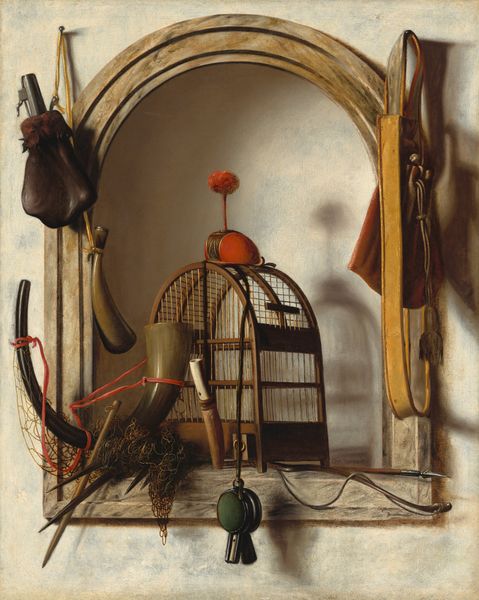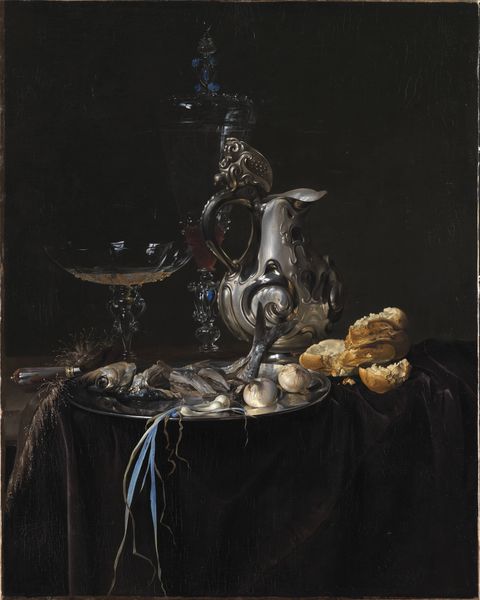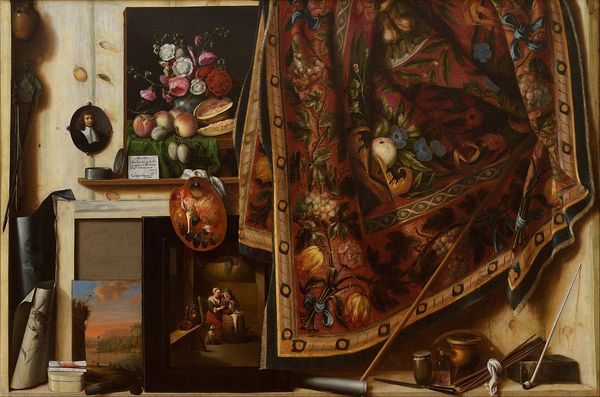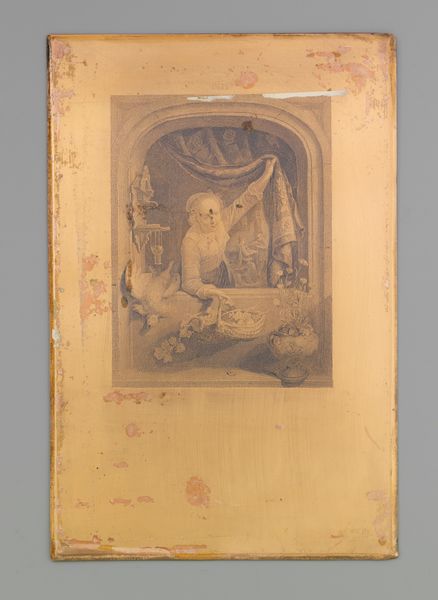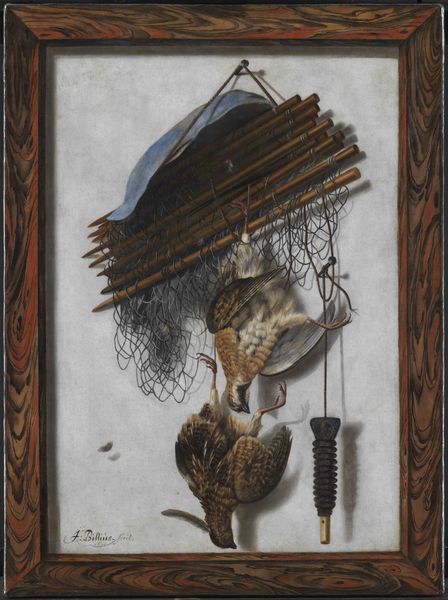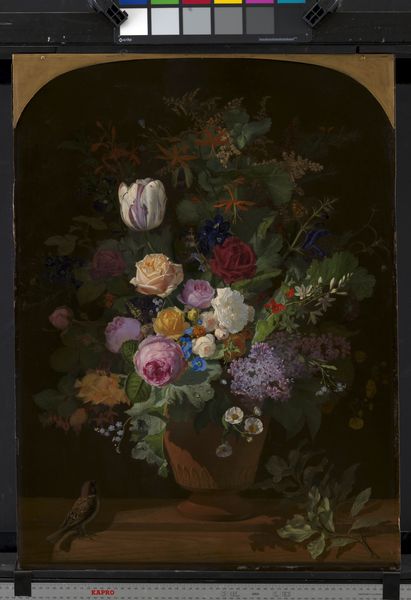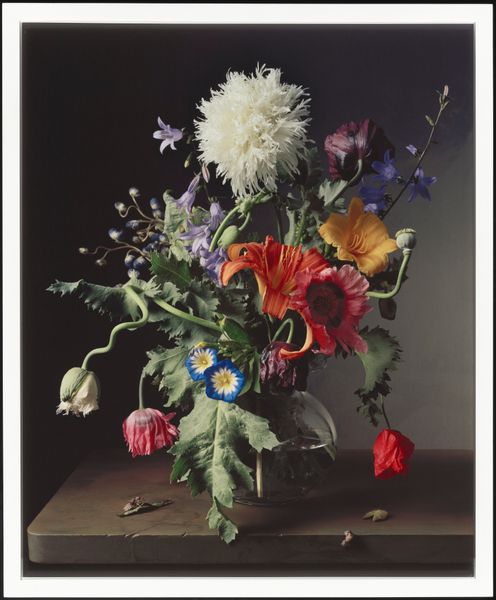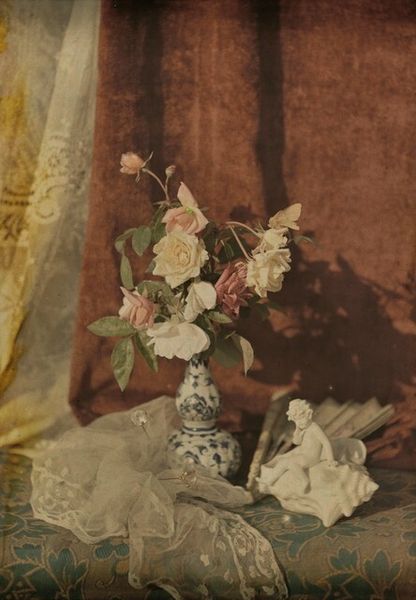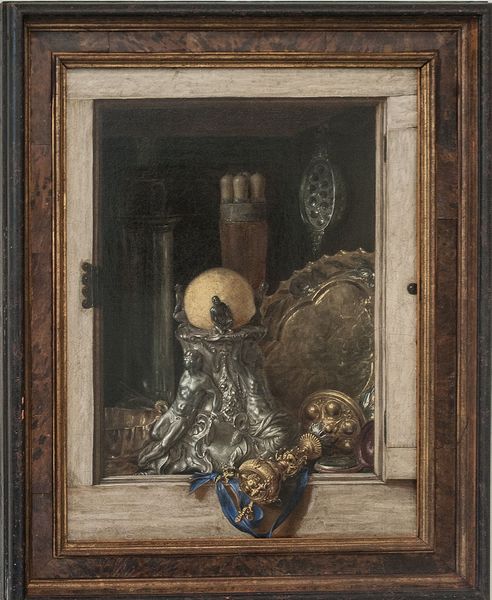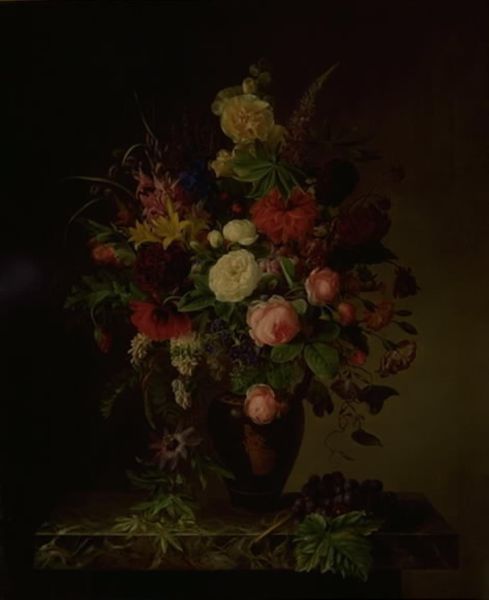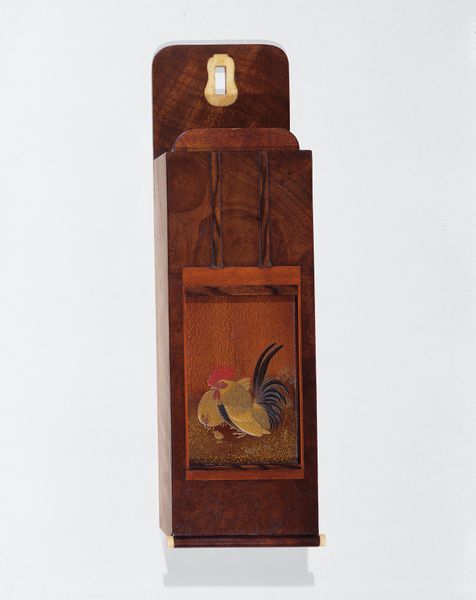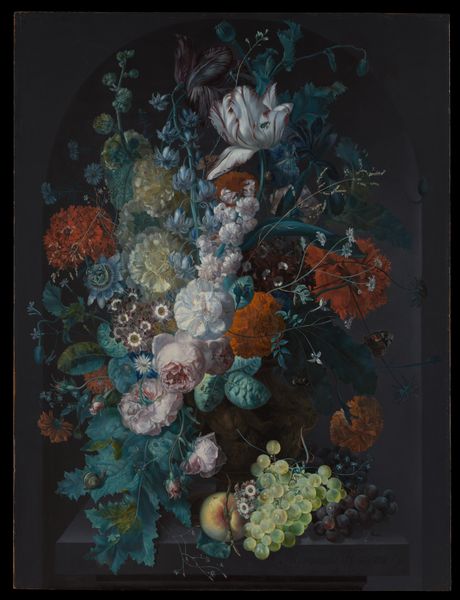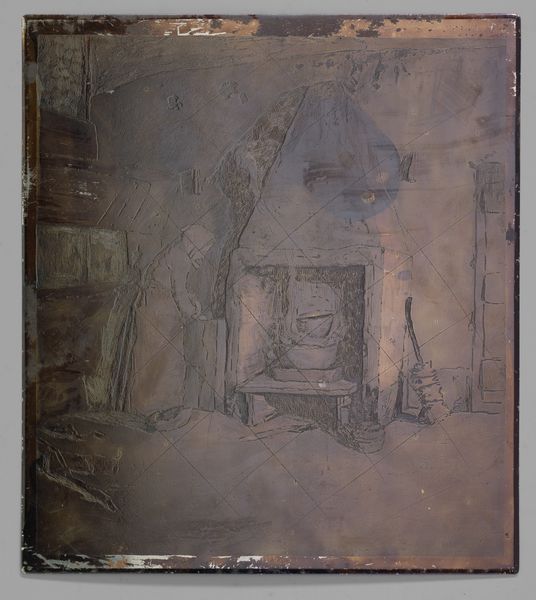
Cut-Out Trompe l'Oeil Easel with Fruit Piece 1670 - 1672
0:00
0:00
mixed-media, painting, oil-paint, wood
#
mixed-media
#
baroque
#
dutch-golden-age
#
painting
#
oil-paint
#
sculpture
#
underpainting
#
wood
#
trompe-l'oeil
#
mixed media
Dimensions: 226 cm (height) x 123 cm (width) (Netto), 226 cm (height) x 123 cm (width) x 8.5 cm (depth) (Brutto)
Editor: Here we have Cornelius Norbertus Gijsbrechts' "Cut-Out Trompe l'Oeil Easel with Fruit Piece", created between 1670 and 1672, utilizing oil paint, wood, and mixed media. The realism is striking, it almost feels like I could reach out and touch the objects! How do you interpret this interplay between reality and representation? Curator: Gijsbrechts pushes us to question the very nature of what we see. Consider the context of the Dutch Golden Age: a rising merchant class, global trade, and an intense focus on the material world. These "Trompe-l'oeil" paintings, like this one, celebrate the illusion, mirroring this world while subtly undermining its perceived solidity. Isn't there a deceptive element in suggesting control when power dynamics are profoundly uneven? Editor: I see your point! So the work comments on societal values of the time? The wealth accumulated, the focus on detail... but hinting at an underlying instability. Curator: Precisely. Furthermore, the performative aspect can't be ignored. Look at the 'unfinished' canvas on the easel. Is this an honest depiction of the artistic process, or is it staged for a specific viewer? Is he challenging conventional art historical expectations, highlighting that all works are created through choice and labour? Editor: I never thought about it that way. It does feel very self-aware. Is the artist deliberately exposing the construction, the artifice, challenging conventional views of gender, identity and class through a carefully mediated image? Curator: It suggests he is using familiar visual tools while subtly unsettling expectations of authenticity. Think about other marginalized voices: what strategies do they use to interrupt conventional narratives about themselves? Editor: That connection makes it all so much richer! It's not just a clever trick; it's engaging in a conversation about truth, representation, and societal structures. Curator: Absolutely. This seemingly simple still life is in reality an invitation to critically engage with the world around us. Editor: This makes me realize that it's necessary to keep digging beyond surface appearances and think about broader systems. Thanks so much.
Comments
No comments
Be the first to comment and join the conversation on the ultimate creative platform.
